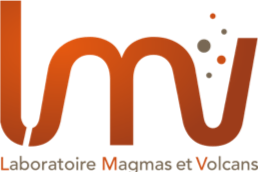
- Cet évènement est passé.
VolcaPot Stéphanie Dumont
13 octobre 2017 à 14 h 00 min - 15 h 00 min
Les VolcaPots sont de retour et nous sommes heureux de vous y convier. Le premier se tiendra le vendredi 13 octobre à 14h : Stéphanie Dumont (SEGAL – University of Beira Interior, Portugal) viendra nous présenter ses récents travaux sur l’éruption de 2014-2015 d’Holuhraun (Iceland)
Title: Spatial and temporal evolution of the plumbing system feeding the 2014-2015 fissure eruption at Holuhraun (Iceland) inferred from a multi-disciplinary approach
Abstract :
Over 14 days propagating seismicity and deformation revealed the onset of a rifting event with the formation of a 47 km-long segmented dyke extending from subglacial Bárðarbunga caldera to the flood plain located ~10 km north of the Vatnajökull ice cap in Iceland. A major effusive eruption started on August 31, 2014 and lasted 6 months, producing an extensive lava field of ~1.4 km3 which is the largest in Iceland since the 1783-84 Laki eruption. Continuous draining of magma from a reservoir located below the Bárðarbunga caldera caused a gradual caldera collapse forming a subsidence bowl up to 65 m deep covering an area of 110 km2, by the end of the eruption (February 27, 2015).
To better understand the spatial and temporal evolution of the volcanic plumbing system feeding the eruption at Holuhraun, we carried out a study integrating geodetic, seismics, remote sensing and gas observations for the entire eruption. This allows us to investigate the link between ground deformation, magma transfer at depth and the eruptive activity. A large data set of synthetic aperture radar (SAR) images, acquired by the TerraSAR-X, CosmoSky-Med and RADARSAT-2 satellites, has been used for interferometric analysis (InSAR). This data is complemented with three-dimensional displacements observed by continuous GPS in the area. Using the series of interferograms, we perform a joint inversion of InSAR derived line-of-sight changes and GPS using a Bayesian approach to characterize the temporal evolution of the dyke opening at depth and the slip along the fractures bordering the dyke.
From late August to early September 2014, dyke emplacement induced widening of 1.3 m and 4-5 m subsidence dominated the surface deformation in the flood plain. >From early to mid-September 2014, a transition period occurred characterized by a significant decrease for numerous observables including seismic activity, tremor character, deformation rates and gas release. The following months show small scale variations with a general decreasing trend for all the observables that seem to be correlated with the eruptive activity. We investigate the role of magma transfer as direct source of these variations for the different observables.
Venez nombreux,
Les Valentins


